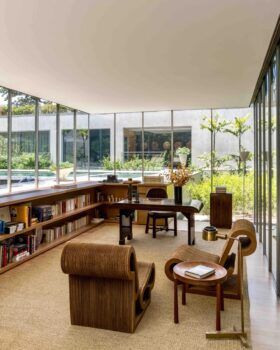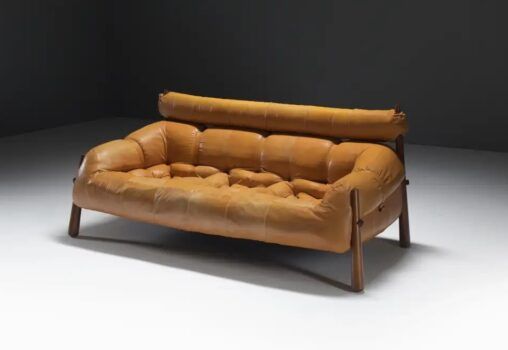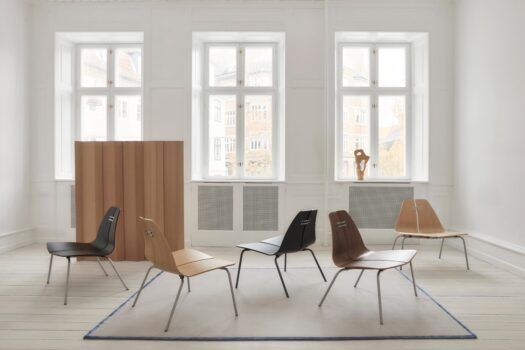Richard Shapiro is a consummate designer, a revered antiquaire, a shrewd collector of art and objets and an accomplished sculptor and painter. In short, he has an eye and a vision. Evidence of his rarefied taste may be found in Past Perfect: Richard Shapiro Houses and Gardens, a new monograph that presents glorious photographs of Shapiro’s extraordinary homes, along with an abundance of design tips. This week, as part of the LCDQLA design celebration, you can meet Shapiro at a book-signing party at his recently opened Los Angeles shop, Richard Shapiro Studiolo.
If you can’t be in L.A. or haven’t yet seen his book, you can still benefit from Shapiro’s style setting, as he here gives The Study some insights into how he might update four rooms from two different homes with pieces from his 1stdibs storefront.

In Past Perfect, Shapiro discusses how he transformed his 1920s Hispano-Moorish house in the Holmby Hills into the Florentine villa of his dreams. Here, in the baronial dining room, he’s arranged art works from various periods and genres in lively conversation.
“Acquiring The Slippery Feel of Inevitability by the young Brooklyn artist Misha Kahn was a real departure for me, because I usually buy monochromatic works. I flipped over this 12-foot-wide psychedelic tapestry in part because of its crossover Aubusson vibe. The workmanship really is like that of an Old World tapestry,” says Shapiro. “To freshen my dining room, I could see substituting Kahn’s work for Alan McCollum’s striking 192-piece installation from his ‘Surrogate’ series.”

For the villa’s upper landing, Shapiro commissioned a cardboard wall sculpture by the Swiss artist Florian Baudrexel. “I’d seen a work of his [in] T Magazine paired with a Vladimir Kagan sofa and immediately sought him out,” Shapiro recounts. “When discussing the commission, I stipulated that the work had to be made quickly so that it could be installed in time to be photographed for the book.”
“At that time, I had a pair of handsome 18th-century Italian giltwood chairs in my shop that were about to be sent off to a client. I thought one might look interesting juxtaposed with the piece.” Hence the image you see here. It’s the only vignette in the book that features a piece of furniture that Shapiro doesn’t own.
“I think this eccentric Italian armchair from the 1950s would look very interesting with the relief. I might keep the chair in the white muslin, but it would also look handsome in a vividly colored mohair or silk velvet.”

Two framed 16th-century Italian silk chasubles flank the fireplace in Shapiro’s bedroom. “They are very important examples that were featured in a book,” he says. “I could see updating this room by replacing them with these two decorative panels hand-painted in acrylic by Giò Ponti. He made them for the Hong Kong department store Shui-Hing in the early nineteen-seventies. I got them from a dealer in Milan, who acquired them from Ponti’s own daughter. ”

In his Malibu home, which he built from scratch on a promontory overlooking the ocean, Shapiro designed an intimate seating nook by the kitchen, which he furnished with a minimalist glass table and two 16th-century Khymer stoneware vases.
“I love the way the vases float on that clear table, framing the architecture,” he says. “I’ve recently made a foray into Art Deco silver and I think these two Italian pieces with their marvelously mottled surfaces and lyric forms would look as well on the table as the stoneware does. I love the patina on them — you’d never think they were silver.”








